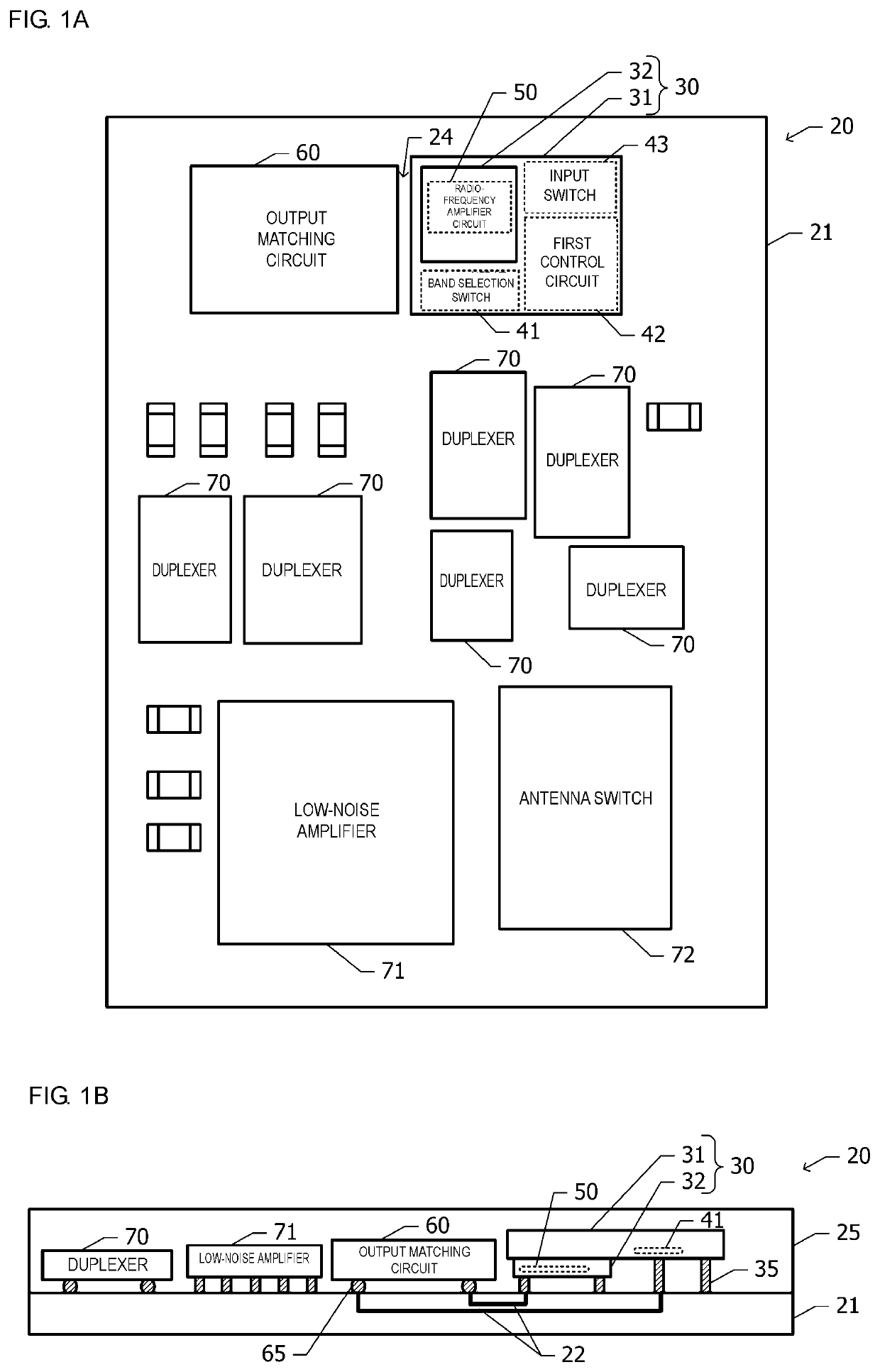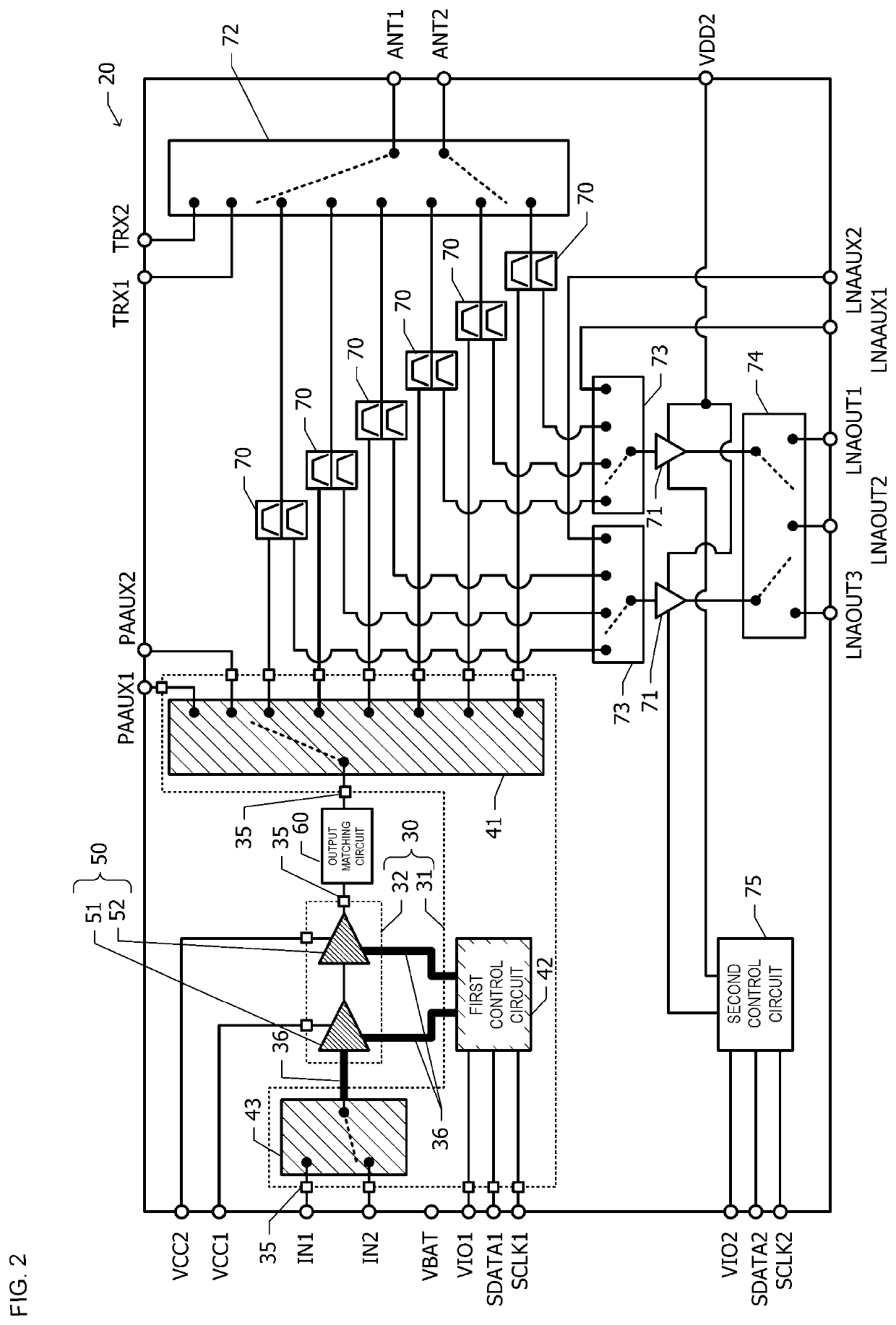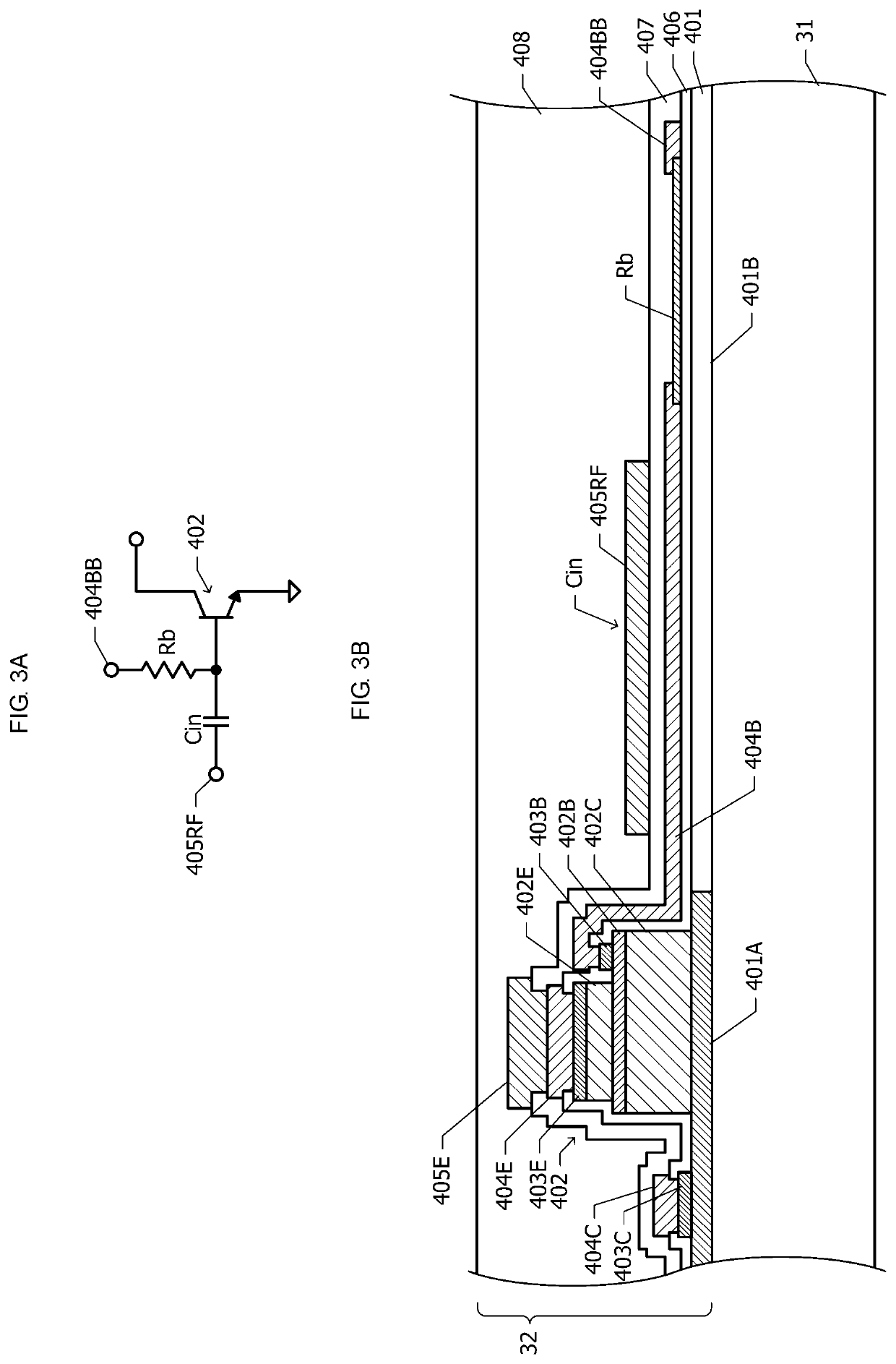Radio-frequency module
a radio frequency module and module technology, applied in the field of radio frequency modules, can solve the problems of increasing loss in signal transfer, difficult to meet the recent demand for radio frequency amplifier circuits with high, and generating heat by hbt, so as to improve the characteristic of heat released, close the distance between the semiconductor device and the output matching circuit, and close the effect of heat releas
- Summary
- Abstract
- Description
- Claims
- Application Information
AI Technical Summary
Benefits of technology
Problems solved by technology
Method used
Image
Examples
first embodiment
[0026]A radio-frequency module according to a first embodiment will be described with reference to drawings in FIGS. 1A to 5D.
[0027]FIG. 1A illustrates an arrangement of constituent elements of a radio-frequency module 20 according to the first embodiment in plan view. FIG. 1B schematically illustrates a sectional structure of the radio-frequency module 20. On a module substrate 21, a semiconductor device 30, an output matching circuit 60, a plurality of duplexers 70, a low-noise amplifier 71, an antenna switch 72, and other surface-mount passive elements (surface-mount devices (SMDs)) are mounted. The semiconductor device 30 includes a first member 31 and a second member 32 joined to the first member 31 in surface contact with the first member 31. The first member 31 may be made of, for example, an elemental semiconductor. The second member 32 may be made of, for example, a compound semiconductor.
[0028]A band selection switch 41, a first control circuit 42, and an input switch 43 a...
second embodiment
[0077]Next, a radio-frequency module according to a second embodiment will be described with reference to FIGS. 6A to 7B. The following description does not repeat configurations common to the radio-frequency module according to the first embodiment described with reference to FIGS. 1A to 5D.
[0078]FIG. 6A illustrates an arrangement of constituent elements of the radio-frequency module 20 according to the second embodiment in plan view. FIG. 6B schematically illustrates a sectional structure of the radio-frequency module 20. In the first embodiment (FIG. 1A), the semiconductor device 30 does not overlap the output matching circuit 60 in plan view, but the semiconductor device 30 is disposed in close proximity to the output matching circuit 60. By contrast, in the second embodiment, the semiconductor device 30 overlaps at least a portion of one or some passive elements of the plurality of passive elements included in the output matching circuit 60 in plan view.
[0079]As illustrated in ...
third embodiment
[0087]Next, a radio-frequency module according to a third embodiment will be described with reference to FIGS. 8A and 8B. The following description does not repeat configurations common to the radio-frequency module according to the second embodiment described with reference to FIGS. 6A to 7B.
[0088]FIG. 8A is an equivalent circuit diagram illustrating an example of the output matching circuit 60. A single-ended amplifier circuit is used as the radio-frequency amplifier circuit 50 in the second embodiment, but a differential amplifier circuit is used as the radio-frequency amplifier circuit 50 in the third embodiment. The radio-frequency amplifier circuit 50 has two output ports for outputting differential signals. The output matching circuit 60 includes an output transformer having a primary coil L5 and a secondary coil L6, a ground-connected capacitor C5, and a series-connected capacitor C6.
[0089]The primary coil L5 of the output transformer is coupled between the two output ports....
PUM
| Property | Measurement | Unit |
|---|---|---|
| radio-frequency | aaaaa | aaaaa |
| frequency | aaaaa | aaaaa |
| temperature | aaaaa | aaaaa |
Abstract
Description
Claims
Application Information
 Login to View More
Login to View More - R&D
- Intellectual Property
- Life Sciences
- Materials
- Tech Scout
- Unparalleled Data Quality
- Higher Quality Content
- 60% Fewer Hallucinations
Browse by: Latest US Patents, China's latest patents, Technical Efficacy Thesaurus, Application Domain, Technology Topic, Popular Technical Reports.
© 2025 PatSnap. All rights reserved.Legal|Privacy policy|Modern Slavery Act Transparency Statement|Sitemap|About US| Contact US: help@patsnap.com



